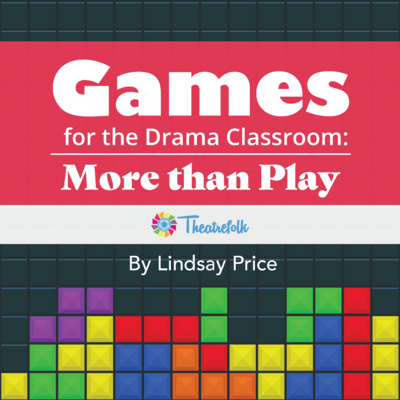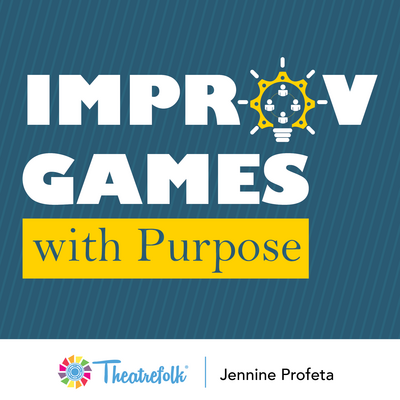Agatha Rex by Lindsay Price is a bold high school take on Antigone - packed with heart, conflict, and a powerhouse ensemble. One girl. One stand. One huge risk. *NEW COMPETITION VERSION AVAILABLE!*
Round-Up: Warm-Up Activities that Encourage Communication
In this round-up, we’ve gathered a whole host of useful warm-up games that you can use in your drama classroom that focus on different aspects of communication. Communication isn’t just students talking to each other – it encompasses many different ways of sharing stories, thoughts, ideas, and feelings.
Vocal Technique & Clarity
We’re starting with the basics – vocal technique and clarity. If your students are speaking too quickly or garbling their words, the audience won’t be able to understand the story they are trying to communicate.
A simple, yet effective warm-up for vocal technique and clarity is to recite the alphabet out loud, as a full group, in a slow, over-enunciated, and exaggerated manner. Have students open their mouths and eyes wide, and really focus on drawing out every single sound from each letter. And yes, you will all look silly together!
For an additional challenge, once you have gone through the alphabet once slowly, you can either speed up the tempo of the group alphabet (without losing any clarity), recite the alphabet backwards, or have students do a gesture (such as bending their knees or clapping their hands) on every third letter.
Try these warm-ups too:
- A Vocal Workout for the Articulators
- Tongue Twister Teamwork (and other exercises)
- Breath Control for Actors & Singers
- Listening / Teamwork Tongue Twister Exercise
Active Listening
Are your students listening to understand, or are they just waiting until they get to speak again? Active listening is a huge part of effective communication. There is nothing more frustrating than talking to someone and feeling like you aren’t being listened to.
Here’s a fun warm-up game for students to practice active listening while practicing their improvisation skills. Have students sit or stand in a circle. Going around the circle, give each student a number in succession – 3, 5, and 7. Give the students a topic to talk about or a story starter prompt. The first student starts the story with 3 words, the second student continues with 5 words, the third student continues with 7 words, the fourth student continues with 3 words, and so on. It’s up to you to decide whether the story should be silly or serious. For example, here is a story about birds:
Student 1: A bird named
Student 2: George decided to go to
Student 3: South America to visit his friend. So
Student 4: he purchased a
Student 5: ticket for the train. However,
Student 6: once he arrived, he realized he forgot
Student 7: his favourite suitcase.
Students need to listen to each other to continue the story in a way that makes sense. Feel free to mix up the number of words each student gets to use.
Try these warm-ups too:
- Listen! Focus!
- Three Things in Common
- Shakedown / Numbered Bodies / Numbered Tableaux
- The End of the Word (and other exercises)
Nonverbal Communication
It’s not just about what your students say, it’s how they portray it with their bodies and faces. Try this warm-up exercise (which is also great for working on active listening). Narrate a simple, yet descriptive story of a student walking to school. While you are narrating the story, have students move about the space, acting out their interpretations of what you’re describing. For example:
“You exit your house and lock the door behind you. You heft your backpack across your back. It’s heavy with textbooks and binders, but it’s a nice sunny day with a slight breeze. You’re feeling good – your homework is done, you’ve packed a lunch, and you’re wearing your favourite shirt. As you’re walking, you notice a strange feeling on your foot. You pause and look at the bottom of your shoe and see that you’ve stepped in a large wad of gum. You don’t want to touch it with your hands, so you try different ways to scrape it off, but it stays stubbornly stuck. While you’re trying to get rid of the gum on your shoe, you notice an odd, wet feeling on your back. You look behind you and notice that your water bottle is leaking through your backpack onto your clothes…”
And so on! Make the story as long or short as you need to for the warm-up. Try to leave your descriptions clear enough for students to come up with ideas on the fly, but open enough for students to come up with creative ways of acting out your narration.
Try these warm-ups too:
Related Articles
Games for the Drama Classroom: More Than Play
by Lindsay Price
A collection of games and activities that go well beyond the notion of "play."
Improv Games with Purpose
by Jennine Profeta
Improv games including feedback suggestions and questions, game variations, teaching tips, side coaching tips, entry prompts, exit slip questions, and more!





